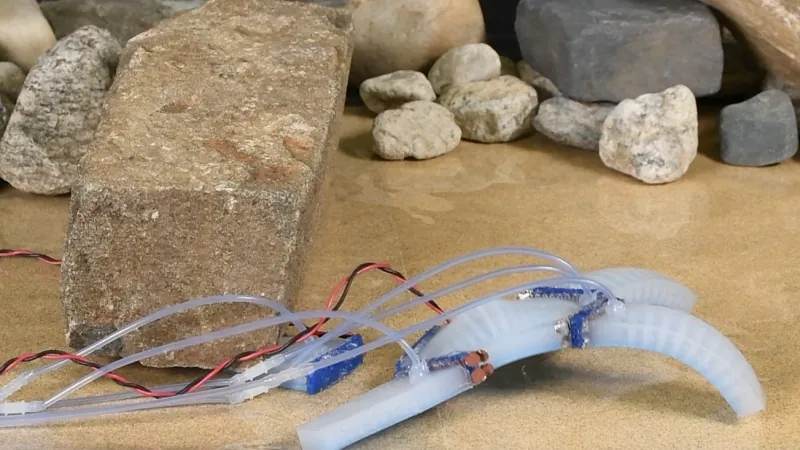
This Revolutionary Robot Can Amputate Its Own Limbs to Survive!
2024-10-15
Author: Jia
Introduction
In an astonishing breakthrough from Yale University, researchers have developed a palm-sized silicone robot that showcases an incredible survival mechanism: it can amputate its own limbs like a gecko shedding its tail to evade predators. During an experiment in a Connecticut laboratory, this innovative machine found itself trapped when a brick toppled onto one of its legs. In its bid to escape, it effortlessly wriggled away, leaving the incapacitated limb behind.
Technology Behind Self-Amputation
The key to this unprecedented technology lies in the robot's unique joints. At room temperature, the material binding these joints is rubbery and flexible, but when subjected to heat, it transforms into a more liquid state, enabling the robot to detach its limbs. This dynamic functionality is not a one-way street; the detached pieces can also be fused back together, allowing for the creation of multi-module systems. Observational tests have shown three robots collaborating to bridge gaps that none could cross individually.
A Shift in Robotics Engineering
Unlike traditional robots made from rigid materials like metal or plastic, this soft robot represents a significant shift in engineering perspectives. As the demand for adaptable robots increases, soft robotics is emerging, excelling in environments ranging from delicate surgical operations to navigating constricted spaces. "We can edit the robot’s functionality on demand," said Bilige Yang, a lead researcher whose findings were published in the esteemed journal Advanced Materials in late May.
Nature as an Inspiration
Drawing inspiration from nature, roboticists worldwide are developing soft robots to carry out diverse functions, including a starfish-like device designed to transport medicine deep within the human body or a jellyfish-inspired robot for underwater exploration. According to Yu Jun Tan, an assistant professor at Singapore's National University, Yale's robot is pioneering in its self-amputating and reconfigurable abilities, offering exciting implications across various fields. Tan envisions practical applications where biodegradable materials are incorporated to minimize environmental impact after limb loss.
Applications in Search and Rescue
Yang emphasizes that nature provides endless inspiration for robotic advancements. Imagine a soft robot on a search-and-rescue mission—how can it persist while navigating treacherous rubble if it becomes entangled or trapped? Their self-amputating technology holds potential solutions for such challenging scenarios, facilitating survival in the most perilous conditions.
Future Innovations
Looking to the future, Yang and his peers aim to implement these innovations into a broader range of soft robots, which would function as components of larger modular systems. This could add capabilities dynamically, reshaping their forms as needed. Yang presented a fascinating example, where a robot could enhance its computational capacity by docking with an additional microprocessor mid-task, presenting an adaptive response that redefines robotic operation.
Next Steps: The Robotic Turtle
The next exciting project on Yang’s agenda is a groundbreaking robotic turtle designed to transition seamlessly between land and water. This creation will feature legs that can morph from the robust limbs of a tortoise to the agile, flattened appendages of a sea turtle. The possibilities with these innovative soft robots continue to expand, making us wonder: what else could this technology revolutionize in our world? Stay tuned!



 Brasil (PT)
Brasil (PT)
 Canada (EN)
Canada (EN)
 Chile (ES)
Chile (ES)
 España (ES)
España (ES)
 France (FR)
France (FR)
 Hong Kong (EN)
Hong Kong (EN)
 Italia (IT)
Italia (IT)
 日本 (JA)
日本 (JA)
 Magyarország (HU)
Magyarország (HU)
 Norge (NO)
Norge (NO)
 Polska (PL)
Polska (PL)
 Schweiz (DE)
Schweiz (DE)
 Singapore (EN)
Singapore (EN)
 Sverige (SV)
Sverige (SV)
 Suomi (FI)
Suomi (FI)
 Türkiye (TR)
Türkiye (TR)